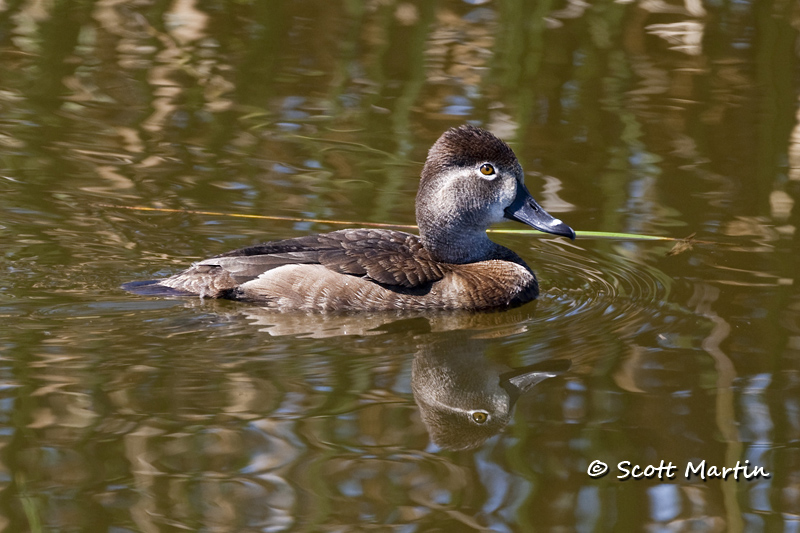
by Scott Martin Photography | Apr 25, 2011 | Birds, Blog, Shore Birds & Waterfowl
The medium-sized Ring-necked Duck is a common duck that breeds in the Northern United States and Canada and migrates to the Southern United States during the winter months although it has been found in western Europe, Costa Rica and Central America on occasion. This duck prefers fresh water lakes, ponds & rivers however has been seen on salt water bodies in the south. The Ring-necked duck is a diver whose diet consists of plants, mollusks, insects and small fish.
The Ring-necked Duck was first described in 1809 and was named for its chestnut neck ring, which is rarely seen except at close range. One of the most noticeable field marks of this duck is its prominent white bill ring so perhaps this duck would be better known as a Ring-billed Duck!
The Ring-necked duck does not associate in large flocks hence they are often only seen in pairs. They are prolific egg layers with anywhere from six to fourteen eggs laid which are then incubated by the female for approximately one month while the male brings food to the nest.
This first image is of a female.

Here is the male.
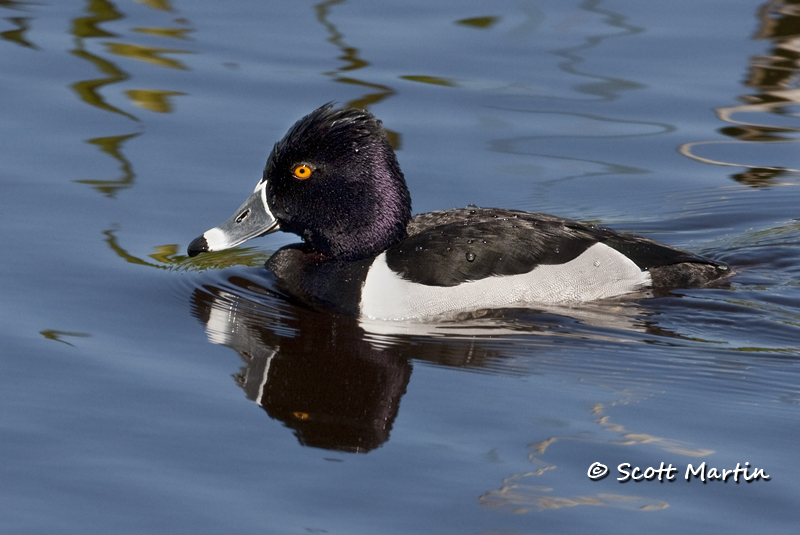
I apologize for the rather high angle these images were taken from, however the fairly steep banks along the ponds at the Viera Wetlands (and the gators) don’t allow one to get as low to the water as one would like.
Lastly, for those of you follow this blog regularly, I’m trying something new. The first mention of a bird in this and future blog posts will be in bold and if you hover over the name in bold with your mouse, the scientific name of the bird will be displayed in a gray text box. I’m teaching myself HTML & CSS with the hope of providing a better blog experience when you stop by this site.
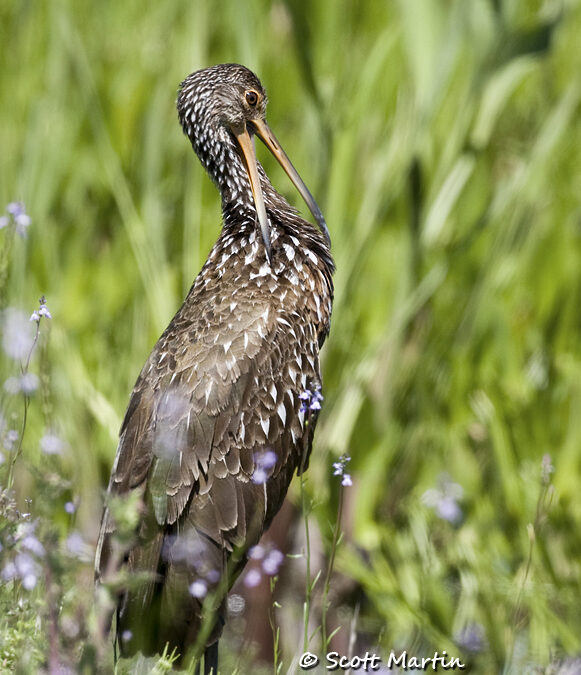
by Scott Martin Photography | Apr 16, 2011 | Birds, Blog, Shore Birds & Waterfowl
The Limpkin is a very unique bird and one of my favourites to photograph whenever in Florida. They are a large bird, 26-28 inches in length with a wing span of approximately 45 inches. Although morphologically they look like large Rails and skeletally they resemble Cranes, by design they are perfect for what they do, which is forage for Apple Snails – their primary diet. The Limpkin gets its name from its rather awkward appearance whether in the air with its stilting wing movement or walking along the ground with its less than smooth gait. Not surprisingly, a collective group of Limpkins is known as a “hobbling”. The world-wide population of the Limpkin is strong with numbers estimated at over 1,000,000 mostly in South and Central America. In Florida its numbers are on the decline due to the declining Apple Snail population created by urbanization. As a result the Limpkin is listed as a “Species of Special Concern” in North America.
This first image of a Limpkin is somewhat of an attempt to give the shot an artistic feel by purposely moving to have the purple flowers in front of the bird in the foreground…..not sure if it works, but it’s always a good exercise to experiment with composition whenever you have your camera out!
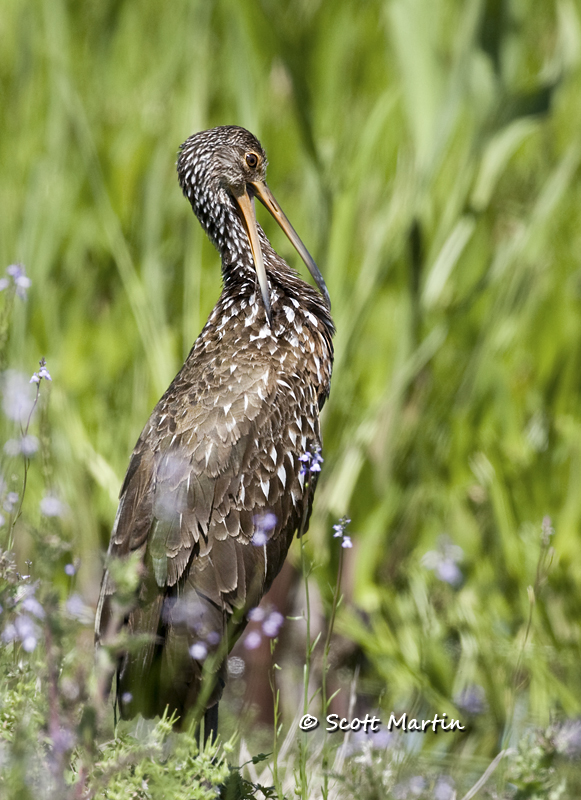
The following image shows the strong and powerful beak of the Limpkin. After finding an Apple Snail the bird places it on the ground, carefully lines it up and then impales the shell with its beak so it can then extract the snail. The design of the beak is perfect for doing this. It is a very interesting feat to observe and also hear the unique sound it makes.
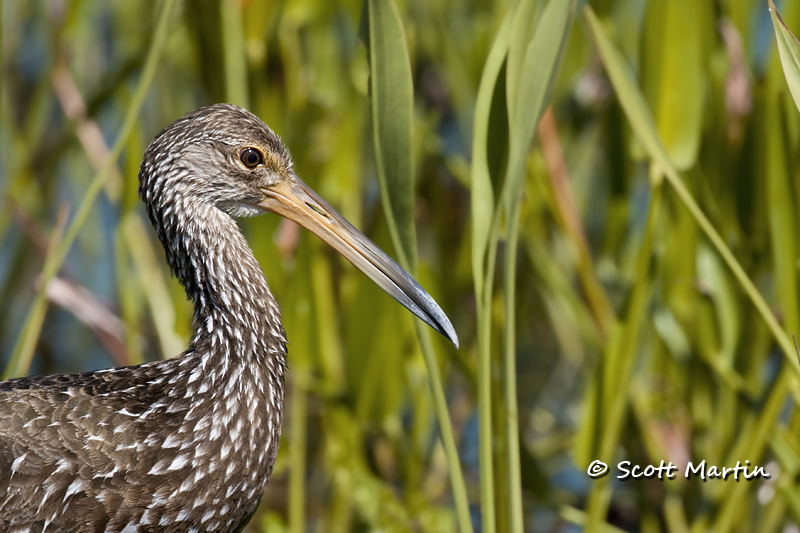
Happily bringing another Apple Snail to the waters edge for a snack.
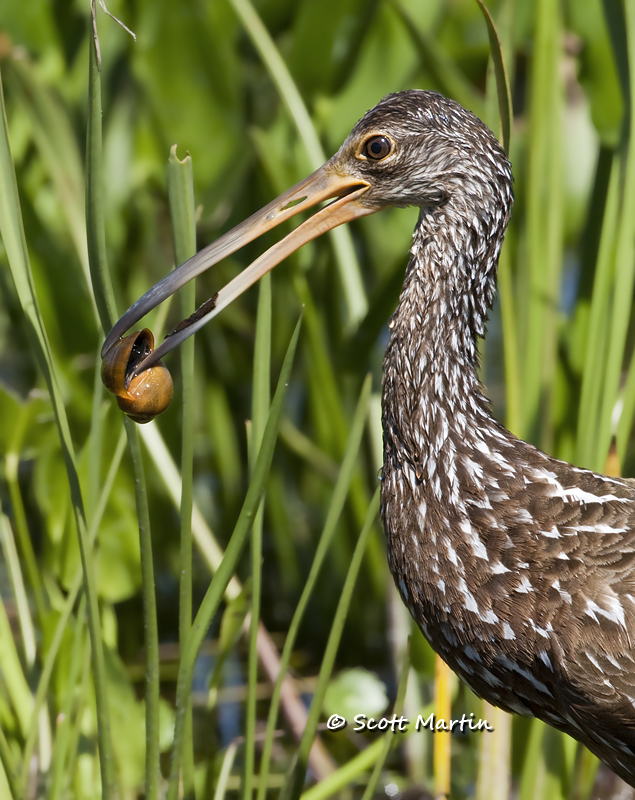
There are many more Limpkin images, including a number of in flight shots you can see in the Wading & Shore Birds Gallery
More Limpkin Images
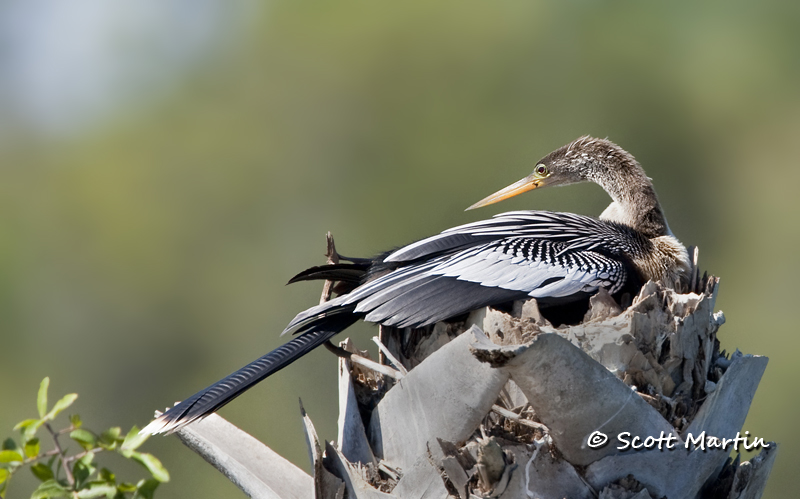
by Scott Martin Photography | Apr 14, 2011 | Birds, Blog, Shore Birds & Waterfowl
The Anhinga is a large water bird that is found around the world and is common in Florida, where all of the images in this post were taken. The Anhinga is an unusual bird with a long snake-like neck and a large tail that resembles that of a wild turkey which has resulted in the nick name “Water Turkey”. Anhingas are about three feet long with wing spans of approximately four feet. Like their cousin the Cormorants, they lack the ability to secrete oil onto their feathers in order to waterproof them. As a result they are less buoyant and very capable swimmers traveling deep under the surface to spear fish with their long sharp beak. Anhingas often paddle along the surface with only their neck and head above the water which is interesting to observe. The fact that their feathers are not waterproofed requires the Anhinga to dry off its feathers and wings before being able to fly. They do this by spreading their wings in the sun at the water’s edge or in nearby thickets.
Anhinga on the nest.

Although Anhingas are typically quiet, they will get quite vocal when challenged by other birds or predators. The next image also shows the tail display, quite similar to that of a wild turkey.
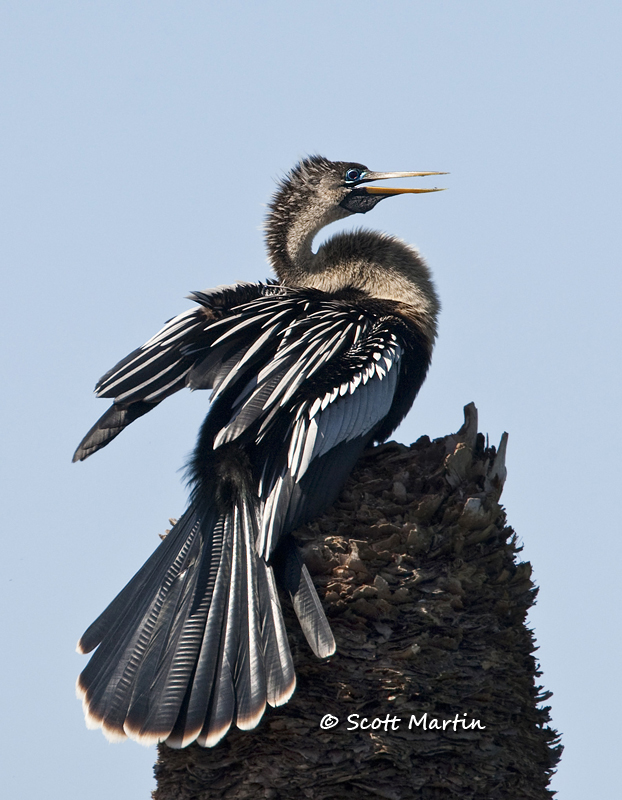
.
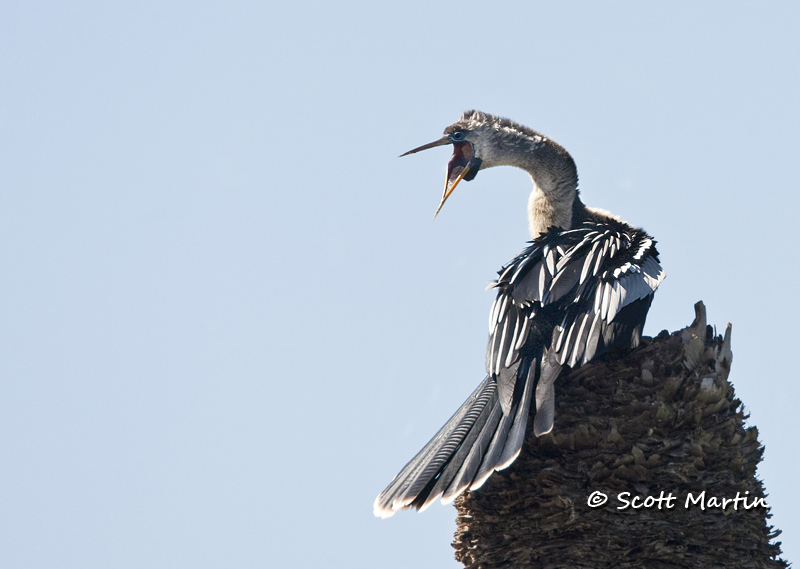
The classic swimming posture with the body completely submerged.
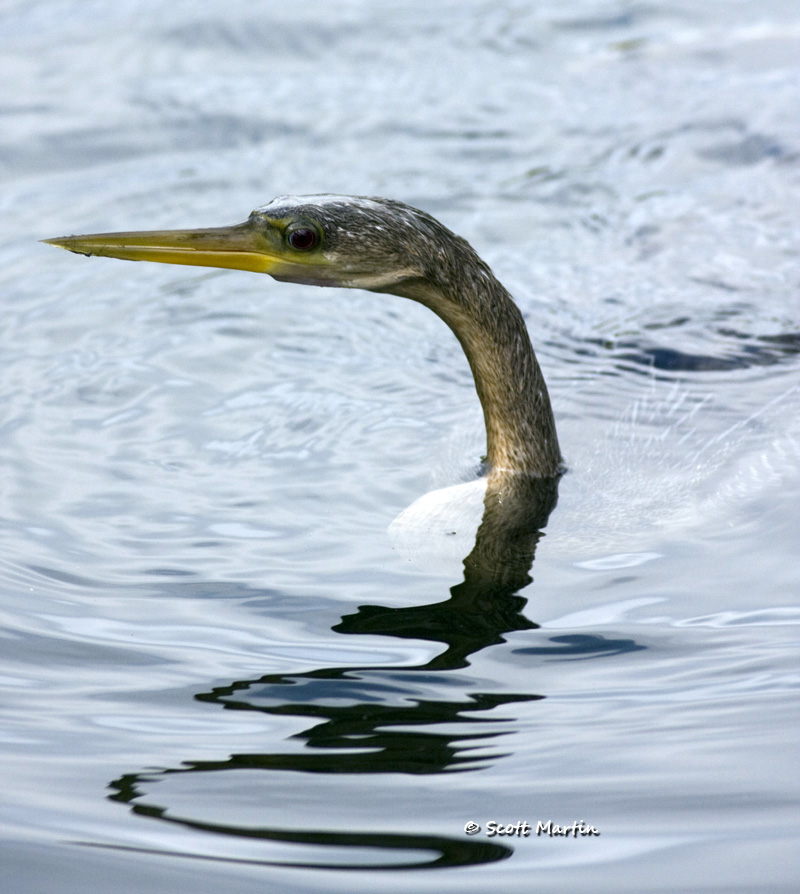
More images of Anhingas can be seen in the Pelicans, Anhingas and Cormorants Gallery
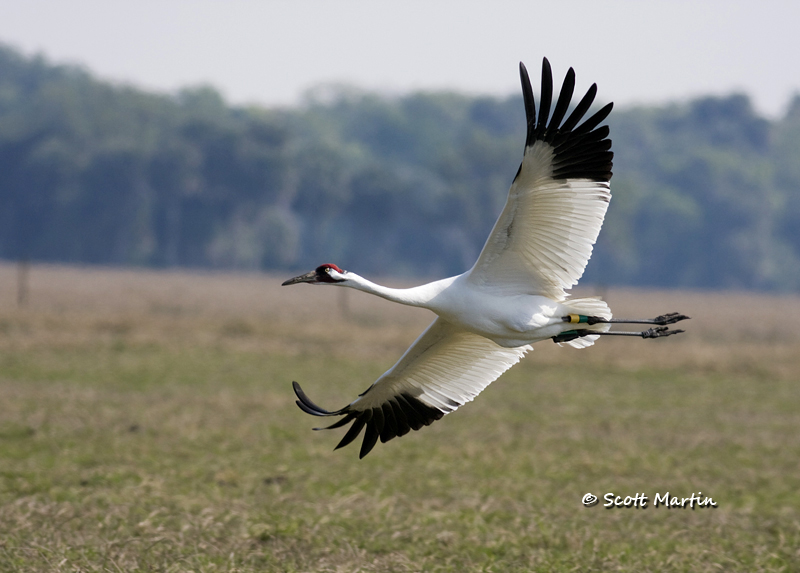
by Scott Martin Photography | Mar 3, 2011 | Birds, Blog, Raptors, Shore Birds & Waterfowl
For many years our family has joined the March Break Exodus and headed to Florida. It’s hard to believe that time of the year has arrived again! For a bird photographer March is a great time to be in Florida as many of the birds are nesting, which means they are also in their colourful breeding plumage.
Whenever you travel and are looking for birds, a great tip is to look through the yellow pages and find someone listed who makes custom bird houses and give them a call. My experience is that they will not only know where the birds are but also be willing to tell you! This is exactly what I did a few years ago and when the gentleman on the phone asked what types of birds I was looking for, my somewhat tongue-in-cheek reply was “Snail Kites and Whooping Cranes”. I was surprised when he answered “No problem, here’s exactly where you need to look”. Even more surprised were my wife and I when after driving about forty-five minutes to the location suggested we were greeted by four Whooping Cranes flying directly over top of our heads. It was an amazing sight which was followed by about an hour of watching two pairs of Whooping Cranes. After the Cranes moved on to another location we walked down to the shore line of Lake Kissimmee and within ten minutes a Snail Kite, clutching an Apple Snail flew by and offered the perfect photographic opportunity. We have gone back to the same location every year since and you guessed it, have not seen any Whooping Cranes or Snail Kites since!
Here is one of the Whooping Cranes from that day, taken hand-held with a Canon 40D and EF 400mm f/5.6 L lens.

Whooping Cranes are an endangered species and the rarest bird in North America with ~400 known wild birds. They are also North America’s tallest bird standing about six feet high with an eight foot wing span. The following image shows the relative size of the Whooping Crane….and no those are not miniature cows in the foreground 🙂
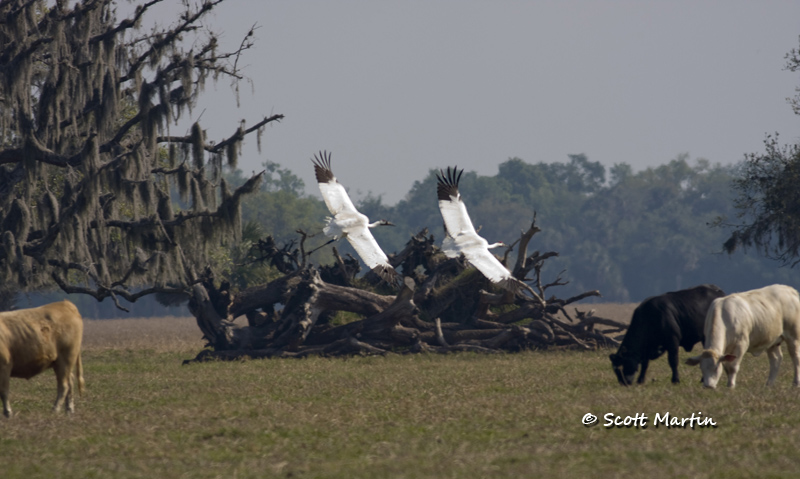
The Snail Kite is the rarest North American Raptor and is a locally endangered species in Florida where it is estimated there are about 400 breeding pairs. Their primary diet is the Apple Snail and they use their talons to deftly remove the snails from plant stems just below the water surface. They are so good at this process that they rarely get their feathers wet in the process.
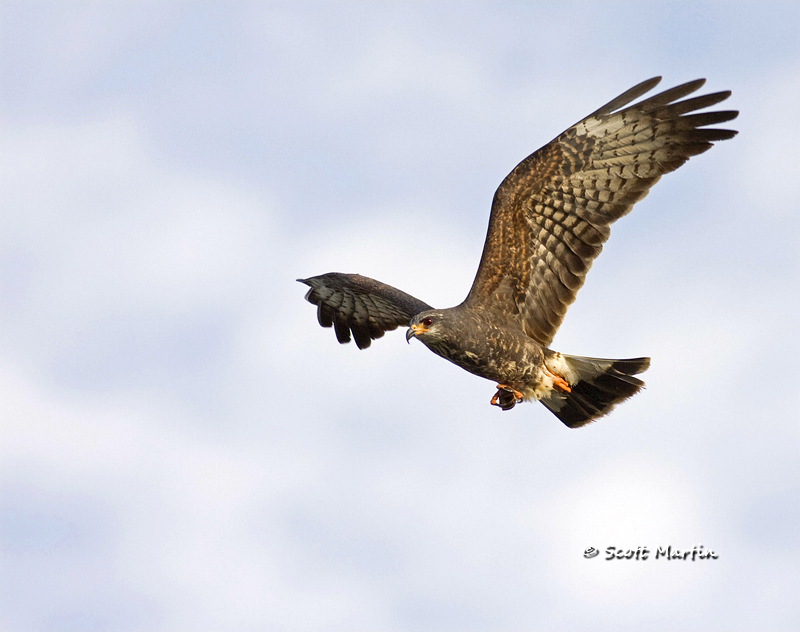
This year our goal is to photograph Snail Kites and Eagles while in Florida and who knows, perhaps even another Whooping Crane.
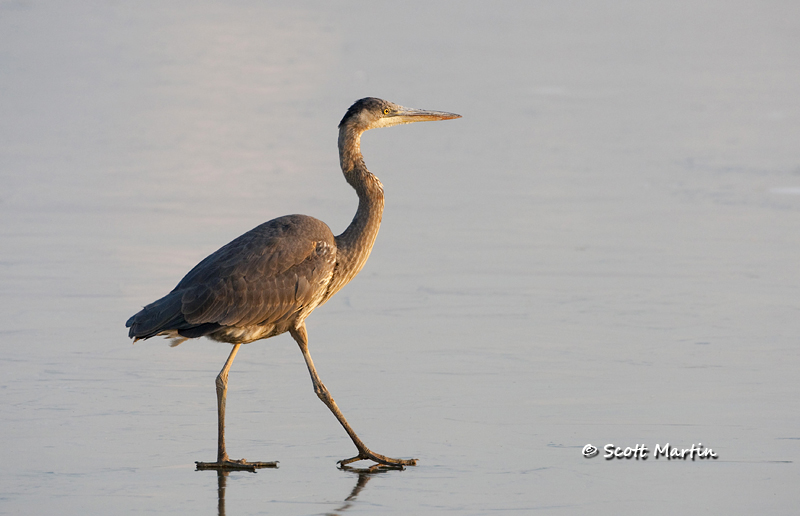
by Scott Martin Photography | Dec 28, 2010 | Blog, Shore Birds & Waterfowl
I trust you have had a wonderful Christmas Season and are looking forward to an exciting New Year. It’s hard to believe 2011 is upon us…..where has the time gone? It seems like yesterday we were all in a flap over Y2K!
From a birding point of view winter is a great time to be out with a camera as there are birds around that we can’t see any other time of the year. The Great Gray, Snowy and Northern Hawk Owls may be seen not too far from Oshawa and plenty of winter ducks & gulls can be seen along the shores of Lake Ontario.
The Great Blue Heron is not a bird normally seen after the weather cools and the ponds start freezing over as it makes hunting for their favourite food, which is fish, very difficult so they are forced to turn to small animals such as mice, voles and chipmunks. By this time of year most Herons have found their winter homes in Florida!
Here is a local straggler (taken at the Lynde Shores Conservation Area) gingerly walking on the ice looking for an opening to fish.

.
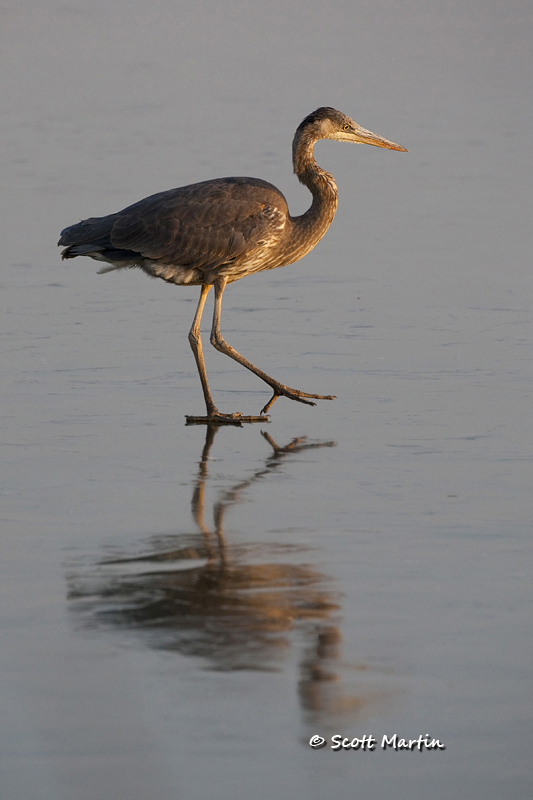
.
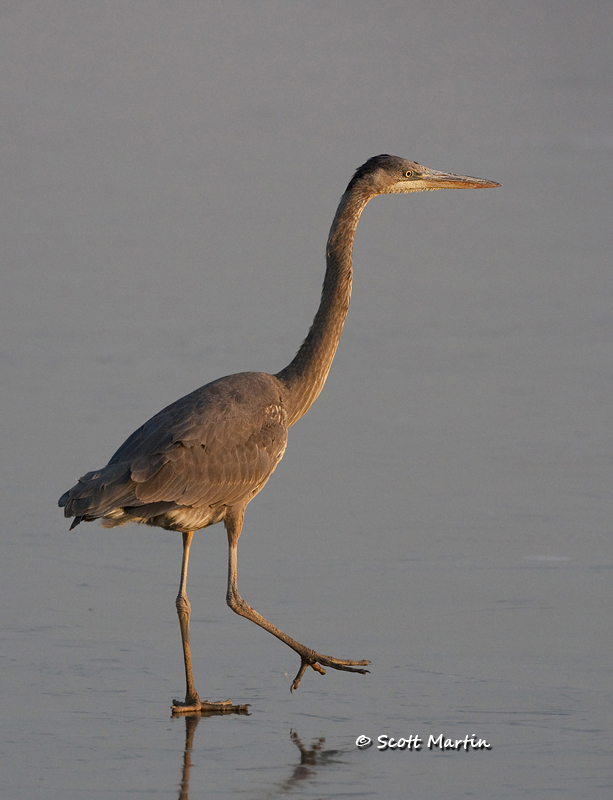
Great Blue Herons are the largest North American Heron, and prefer wetlands, marshes & ponds to live in however they are also very popular around fisheries in the south which was originally thought to be a big problem for fish farmers. Interestingly, studies have shown that the Herons typically eat the sickly fish that swim near the surface and would not have been productive anyway. So the Great Blue Herons actually do the fish farmer a favour. Herons normally eat fairly small fish (as shown below), however they refuse to throw away any big catches they make and have actually been known to choke to death trying to swallow a large fish.
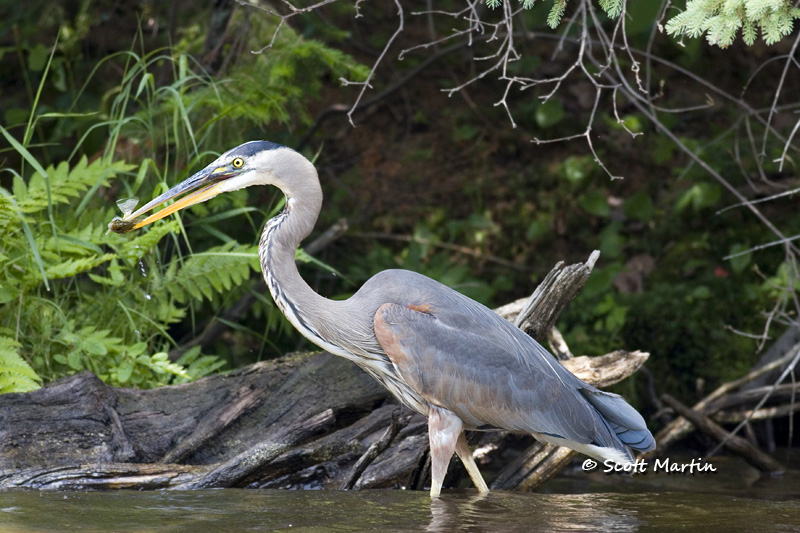
Great Blue Herons usually nest in large groups called Rookeries, or if exclusively Herons, Heronries. They breed annually and the female lays two or three eggs having a gestation time of about 28 days. Adult Herons feed their young regurgitated fish and when adults are feeding their young they ingest at least four times as much food as normal. Herons often pair for life and during breeding season they spend most of their time working on the nests and feeding the young ones.
Here is a nesting pair taken this past spring in Florida.
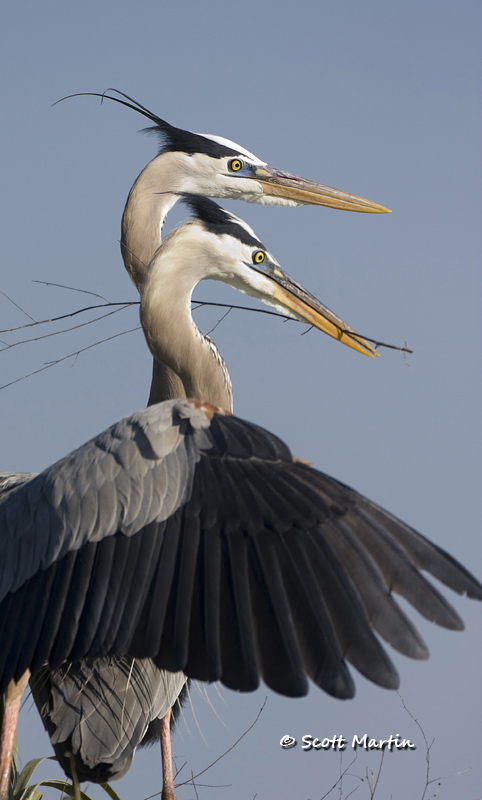
And a proud parent!
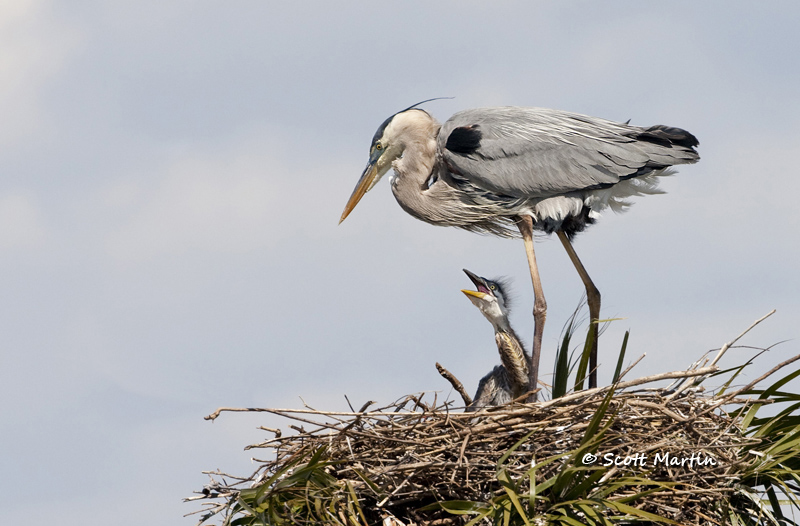
And finally an in flight shot, which is surprisingly easy to take as the Herons are slow fliers and often cruise along close to the water providing a nice pose. This portrait was taken standing at the end of our dock at the cottage and the Heron was actually below the level of the camera at a distance of about twenty feet.
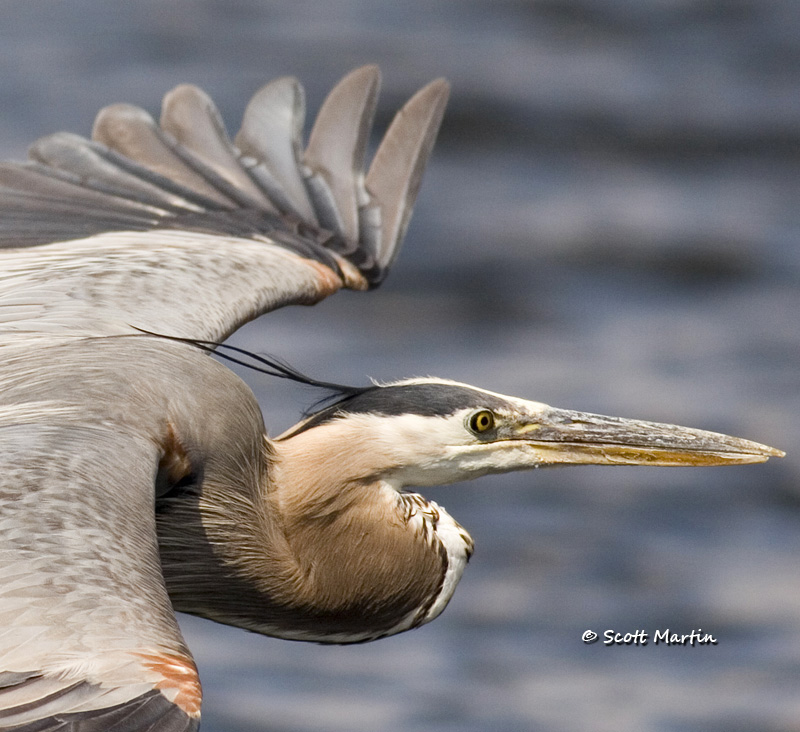
More images of Great Blue Herons can be seen in the “Wading & Shore Birds” gallery.
Happy New Year to everyone and hopefully the winter duck & owls posts will show up early in the new year!

























Follow Scott Martin Photography